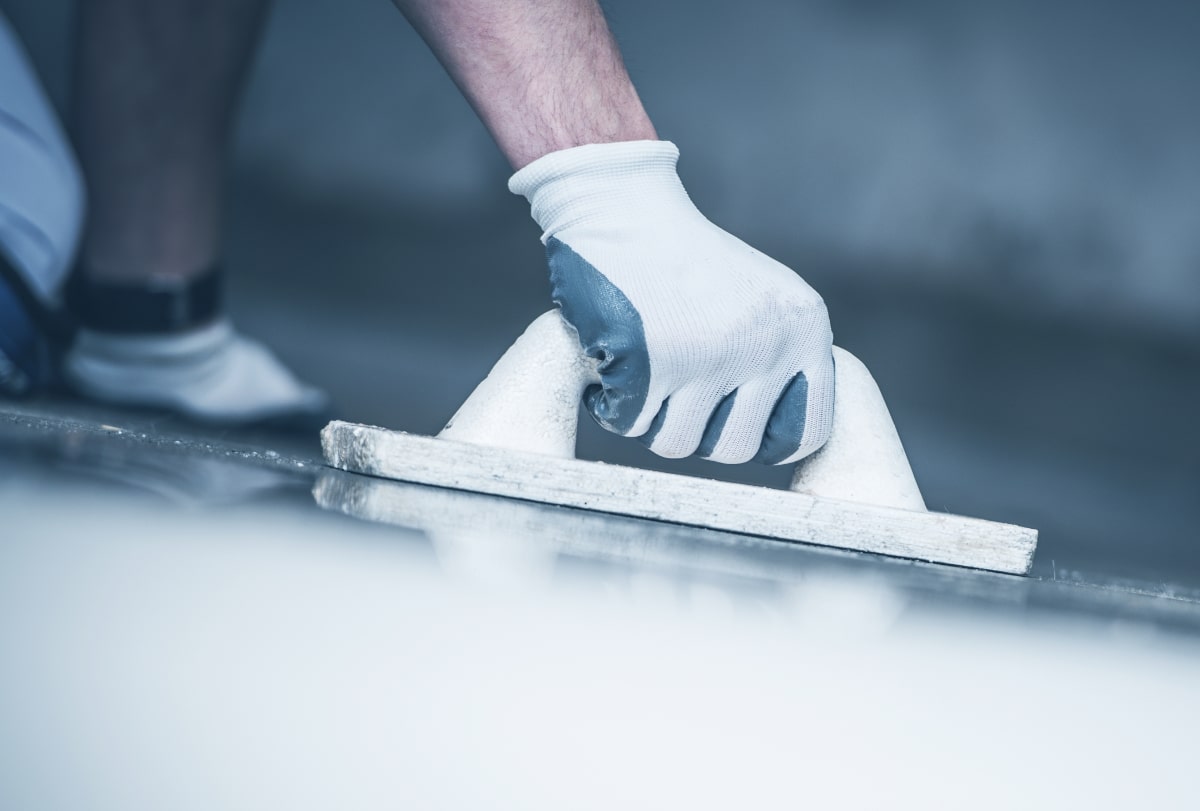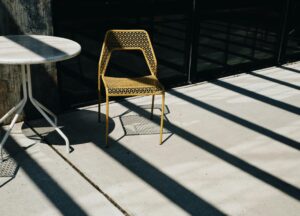If you’re wondering about the differences between polyaspartic and epoxy coatings for your concrete floors, we’ve got you covered.
Durability, cure time, visual impact, and value are key. In this head-to-head comparison of polyaspartic vs epoxy, we aim to demystify these factors, empowering you to make the right choice with confidence.
Key Takeaways
- Polyaspartic coatings are superior to epoxy in terms of UV stability, impact resistance, and curing times, with an ability to withstand a wide range of temperatures and traffic conditions for longer.
- While epoxy was the concrete coating of choice twenty years ago, that’s no longer the case today. Polyaspartic floor coatings present a better long-term investment due to their durability, low-maintenance requirements, and the 15-year warranty offered by Everlast Concrete Coatings.
Understanding the Contenders: Polyaspartic and Epoxy Explained
Epoxy coatings are known for their robust protective capabilities. They offer protection against harsh abuse, including chemicals, corrosion, and abrasion, making them a popular choice for a wide range of settings. However, when compared to newer polyaspartic technology, an epoxy coating falls short in terms of durability, crack resistance, and fade resistance.
On the other hand, polyaspartic coatings present an advanced solution for protective applications on top of concrete. Polyaspartic is lauded for fast cure times, UV resistance, and overall toughness. Whether the need is for protection against heavy traffic, harsh impacts, or UV exposure, polyaspartic coatings rise to the occasion.
Polyaspartic vs Epoxy Durability
A key factor to consider when choosing a floor coating is durability. Epoxy coatings are known for their hard finish, enabling them to withstand heavy traffic. However, this hardness can actually be epoxy’s downfall, which we explain below.
Polyaspartic floor coatings are recognized for their superior durability, with
- High UV stability
- Fast curing times
- Lifespan that extends over a decade with proper installation and maintenance
- Resilience to impact and weather conditions
These advantages make polyaspartic floor coatings a better choice compared to epoxy alternatives. Let’s take a look.
Hot Tires and Heavy Traffic
When considering environments with intense vehicular activity, like a concrete garage floor, polyaspartic coatings outperform epoxy options significantly.
Epoxy flooring doesn’t stand up as well as poly to hot tire cars in and out over the years.
The heat sensitivity of epoxy coatings can lead to peeling when subjected to the warmth from vehicle tires, an occurrence recognized as hot tire pickup or delamination. Polyaspartic coatings display meaningful resilience to this issue, maintaining their integrity even when in contact with heated tires throughout decades of use.
We’ve seen plenty of examples over the years of pitting and cracking right where a homeowner parked their car on their epoxy resin over the years!
Response to Temperature Variations and Concrete Expansion
Another challenge for (some) floor coatings is temperature variations.
Polyaspartic coatings showcase their versatility in this regard. Polyaspartic coatings have a small amount of inherent flexibility, allowing them to absorb the natural movement of concrete floors caused by temperature changes throughout the seasons, reducing the likelihood of cracking.
Epoxy is so hard, by contrast, that as concrete naturally “flexes” or expands and contracts with cold and warm temperatures, epoxy simply cracks.
For garage flooring or concrete flooring anywhere that isn’t perfectly climate-controlled, polyaspartic shines for this reason.
Warm and cool conditions significantly impact the cure times of epoxy coatings due to their sensitivity to temperature changes, too. This sensitivity can lead to sagging on vertical surfaces and the development of bubbles within the coating layer, known as outgassing, when applied to porous substrates and subjected to heat.
Fading And UV Resistance
Epoxy coatings will yellow over time and exposure to sunlight and UV rays. Unlike polyaspartic, epoxy coatings are not UV stable, and direct sunlight will cause fading.
This matters in high traffic areas exposed to the sun, like daylight basements, garages, and of course, anywhere outdoors.
Aesthetic and Functional Customizations
Beyond durability and resilience, the aesthetic appeal and functional customizability of floor coatings are a significant consideration for many. Epoxy and polyaspartic floors can be customized with a wide array of options, including:
- Natural color options
- Metallic lusters, offering a granite-like appearance
- Non-slip textures that enhance safety without compromising the decorative look
Polyaspartic coatings are highly customizable. They can be enhanced with a diverse array of flake colors, shapes, sizes, and patterns for decorative chips during the application of the build coat. Additionally, their excellent UV resistance prevents yellowing and maintains aesthetic integrity when exposed to sunlight.
Color Choices and Decorative Add-ons
Both epoxy and your polyaspartic top coat come with a selection of color options and the ability to add decorative details. These coatings can be customized extensively using colored flakes, chips, or flecks that are evenly distributed throughout by being incorporated into the wet second layer of the coating during application. This allows for a perfect match to any interior design theme.
Achieving the Desired Finish
Customizing floor coatings to attain a specific finish is an important aspect to consider. Concrete coatings have a tendency to become slippery when wet, which could pose a safety risk. To counteract this, they can be embedded with granule textures, metallic pigments, and colored flakes, offering a variety of textures and contributing to non-slip properties.
Polyaspartic coatings offer several benefits, including:
- Ability to add anti-skid materials into the topcoat, minimizing slips and falls
- UV resistance, protecting the finish from yellowing and degradation
- Long-term aesthetic appeal whether used indoors or outdoors
Installation Showdown: Polyaspartic’s Speed vs Epoxy’s Process
Another important factor to consider when choosing a floor coating is the installation process. The application of epoxy coatings involves a complex multi-step procedure and it requires a full week to cure fully.
In contrast, polyaspartic coatings are known for:
- Their rapid installation and curing process within about 48 hours. The fast curing nature of polyaspartic coatings is advantageous in time-sensitive projects, or simply for those who want to get on with their life!
- An entire floor can often be completed within a single day, and you’ll be able to walk on it the next day.
- They can be applied in a wider range of outdoor temperatures compared to epoxy.
Time Efficiency with Polyaspartic Coatings
Polyaspartic coatings stand out for their exceptional time efficiency. Their swift drying characteristics enable them to be ready for foot traffic in less than a day under various environmental conditions, which greatly reduces the downtime between application layers and facilitates quick completion for most projects.
Our customers love it!
The entire process of applying a polyaspartic coating system, including both the poylurea base coat and top coat, can be achieved within a span of just one day. In just a few hours after installation, floors are set to handle foot traffic. They become capable of sustaining vehicle traffic after about 48 hours.
Owing to these expedited timelines, Everlast Concrete Coatings is able to finish most projects involving polyaspartic flooring in just one or two days—this translates into significantly reduced inconvenience for residential and commercial concrete coating clients alike.
Maintenance and Upkeep: A Comparison
Maintenance and upkeep factors can influences the choice of floor coating in the poly and epoxy debate.
Floors coated with polyaspartic are known for their minimal maintenance requirements, necessitating just regular sweeping or vacuuming. They’re easy to clean due to their stain resistance, and cleaners used should generally be pH-neutral. We advise spot-cleaning of spills to prevent damage from highly acidic substances, and using non-abrasive cleaning solutions and avoiding harsh chemicals will extend the lifespan of polyaspartic flooring.
Long-Term Investment: Cost Analysis
You might think that a professional polyaspartic coating will cost more than epoxy due to all of these beneficial factors.
You’d be wrong!
A DIY epoxy coating might cost you a few hundred bucks and a weekend of your time, but beware that inexperienced epoxy application can result in a disappointing look and performance.
Meanwhile, professionals in 2024 will use ONLY polyaspartic coatings. If you find a pro installing epoxy, look elsewhere. The cost of a polyaspartic floor coating will range from $5 to $7 per square foot. And, your polyaspartic flooring will prove more cost-effective over time due to its remarkable durability and infrequent need for replacement.
Over the years, the annual maintenance cost associated with a garage’s polyaspartic-coated surface is virtually non-existent.
Everlast Concrete Coatings: The Polyaspartic Advantage
Everlast Concrete Coatings is proud to offer high-quality polyaspartic floor coatings for your concrete floor that not only provide a more durable finish, but are also UV-resistant and maintain their visual appeal over time. The assurance of durability is reflected in our 15-year warranty on every installation.
We strive to provide the best polyaspartic floor coatings in the Finger Lakes, backed by a 15-year warranty highlighting our belief in the quality and longevity of our approach. Our coatings are highly resistant to stains, cracks, pitting, and we tackle everything from from garage floors to basements and patios!
Summary
In summary, when it comes to choosing between polyaspartic and epoxy floors for yourgarage floor coating or otherwise, polyaspartic offers several distinct advantages over an epoxy floor coating.
They provide superior durability, are resistant to UV rays and temperature variations, offer a more time-efficient installation process, require less maintenance, and will generally prove to be a smarter long-term investment.
Your choice of floor coating is a crucial decision that will impact the longevity, appearance, and maintenance of your floors. While epoxy coatings have their merits, the exceptional durability, aesthetic appeal, and minimal upkeep of polyaspartic coatings make them the best garage floor coating or basement coating option out there.
With Everlast Concrete Coatings’ high-quality polyaspartic offerings, you can enjoy a beautiful, long-lasting, and low-maintenance floor that stands the test of time.
Frequently Asked Questions
Is epoxy better than polyaspartic?
Polyaspartic surpasses epoxy in terms of durability and flexibility, offering superior resistance to scuffing, scratching, and chipping. Polyaspartic is the more advantageous selection.
What are the disadvantages of a polyaspartic coating?
The cost of acquiring and applying polyaspartic coatings is approximately two to three times higher compared to doing your own epoxy floor at home. Its application necessitates low moisture environments for optimal results, and at times thinning may be necessary to enhance adhesion.
Is polyaspartic on a garage floor worth it?
Yes, polyaspartic is worth it for a garage floor because it is extremely durable and can withstand heavy traffic, heat, and UV light compared to epoxy floor coatings.
How long does polyaspartic last?
Depending on the level of use and abrasion it is subjected to, as well as how skillfully it has been applied, a coating for polyaspartic floors can last between 10 and 20 years. Our coatings come with a 15-year warranty.





